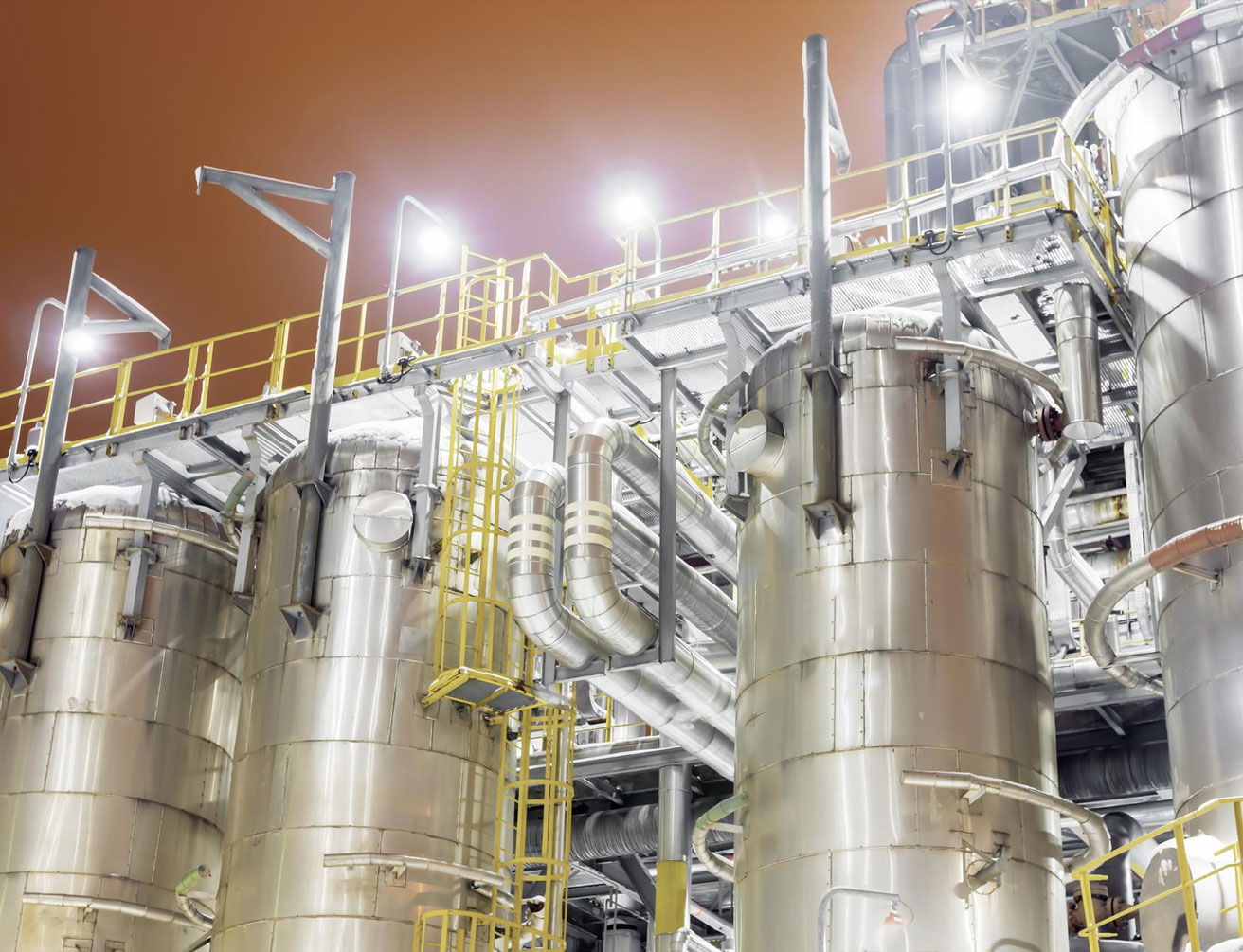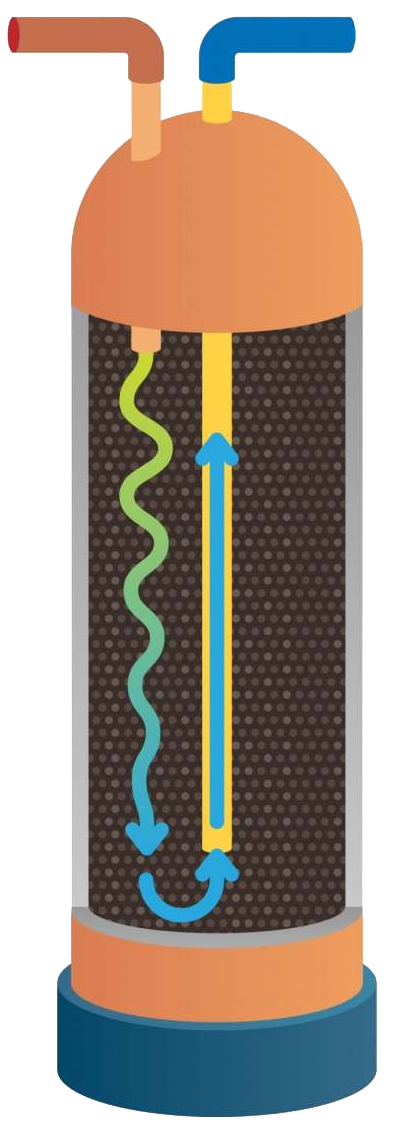Technology
Technology
ExSorbtion’s sorbents have shown high lithium selectivity, which means that even in brines that have low lithium content and higher amounts of salts and other materials, the sorbents show high selectivity for lithium. ExSorbtion has demonstrated lithium extraction from brines that have as low as 40ppm lithium.
ExSorbtion’s sorbents take <2 minutes of contact with the brine to extract (adsorb) most of the lithium in the brine <5 minutes few minutes of contact with carbon dioxide gas to remove (regenerate) most of the lithium adsorbed by the sorbent, which is >10x faster than other DLE processes.
ExSorbtion’s sorbents use carbon dioxide gas for the desorption/regeneration step, and thus the process sequesters carbon to reduce the carbon footprint of the facility (and is therefore much greener).
All (or most of) the CO2 emissions from a geothermal or oilfield operation can be captured and used in our DLE process for regeneration. It takes <2 minutes of contact with the brine to extract (adsorb) most of the lithium in the brine, and <5 minutes of contact with carbon dioxide gas to remove (regenerate) most of the lithium adsorbed by the sorbent. This is >10x faster than other DLE processes.
Since acid is not used, the sorbents last much longer, which is a major cost saving as the cost of the sorbents (>30% of the operating expense) is the highest contributor to operating costs. ExSorbtion’s sorbents have demonstrated efficient lithium extraction for > 500 cycles.
Additionally, since the process does not use acid in the desorption/regeneration step to remove the lithium form the sorbents; therefore, there is no acid storage and pumping requirement, and the process does not require additional steps to clean the acid for reuse or to dispose of it.
Without the use of hydrochloric acid, the direct product is lithium carbonate – a mid-range lithium product, versus other DLE companies whose product is lithium chloride, the lowest valued lithium product.
Sorbents
ExSorbtion’s patented sorbent are based on nanoparticles comprising a porous particle composite formed from a metal ion sieve sorbent. The metal ion sieve provides for lithium-ion selectivity while the imprinted binder provides additional sites for lithium-ion adsorption within an overall porous structure permitting fluid transport within and throughout the particle.
The combination of the two systems in the ExSorbtion composition provides for both efficient lithium-ion uptake, i.e., high lithium uptake and fast kinetics, and effective lithium-ion separation from competing ions. This patented combination is unique compared to other sorbent-based DLE technologies which rely on only one active sorbent system, with the carrier, if any, having only a passive role.


Regeneration with CO2
All the DLE technologies being developed use Hydrochloric Acid for regeneration which erodes the sorbents and diminishes their life, leading to very short sorbent life. This means that sorbents need to be replaced very often, as high as 50 times a year. For a 20,000 tons/year Lithium Carbonate Equivalent (LCE) production plant, the ~$10M cost for replacing 500 tons of sorbent each time, the sorbent costs alone for a year are as high as $500M, or ~$25,000/ton of LCE produced. ExSorbtion’s patented solution uses CO2 instead of acid for regeneration which enables its sorbents to last 10 times longer which reduces the sorbent cost to $50M year, or ~$2,500/ton of LCE produced.
Additionally, since ExSorbtion’s process does not use acid for the regeneration step to remove the lithium from the sorbents; there is no acid storage and pumping requirement, and the process does not require additional steps to clean the acid for reuse or disposal. Without the use of hydrochloric acid, ExSorbtion’s finished product is lithium carbonate – a mid-range lithium product, versus other DLE companies whose product is lithium chloride, the lowest valued lithium product.
Sustainability
Sustainability is a core principle for ExSorbtion and is the primary driver for ExSorbtion to be in the business of lithium production. Lithium solves many a problem related to sustainability, especially with reduction in carbon emissions; however, the mining and evaporation pond processes are ancient processes that are unsustainable in our journey toward a greener, cleaner environment.
After carefully evaluating several DLE technologies, ExSorbtion chose the technology being developed by SRI International. By not using acids and developing a closed loop system, ExSorbtion’s process consumes ~60% lower amount of water than competing DLE processes for each ton of lithium carbonate produced. Not only is ExSorbtion’s DLE technology orders of magnitude better for sustainability than mining and evaporation ponds, but also is significantly better than other DLE technologies that use more than 2 times the amount of freshwater for lithium production.
Direct Lithium Extraction
Lithium is present in solution in varying amounts in a wide variety of geological environments.
These include salt lakes (salars and playas) found in high elevation deserts such as the Atacama in Chile, the Puna region of Argentina and the Qinghai region of China; in oil and gas well brines (produced waters); in geothermal brines, and in seawater.

Lithium is currently recovered from brine sources such as the salars in Chile and Argentina using solar evaporation to concentrate the brine by sequential precipitation of various sodium, potassium and sulphate salts to produce a high lithium content lithium chloride solution. This solution is then further purified by chemical precipitation and solvent extraction to remove residual magnesium, calcium, boron and other deleterious elements.
The purified lithium chloride is then reacted with sodium carbonate to precipitate lithium carbonate while the sodium chloride waste solution is discarded to ponds for evaporation to solid. The overall lithium recovery from solar evaporation processes is low, with lithium recoveries from the initial brine to final product rarely being more than 50% and often significantly lower.
Time frames for development of lithium carbonate plants based on solar evaporation can be extensive. Exploration, permitting and construction time frames of 5 – 7 years are typical. The evaporation takes at least 9 months and can be as long as 24 months and are subject to local environmental and weather conditions.
Evaporation cycles are also affected by the chemical composition of the brine, which impacts on the type and amount of reagents required during evaporation and purification process. DLE processes, on the other hand, are uninfluenced by environmental factors, have fast processing (hours to a few days at most to recover the lithium), and have high lithium recoveries in excess of 70% and often more than 90%.
The overall economics of solar evaporation processes are highly influenced by the initial lithium concentration in the brine. Due to the significant process losses, only salars with relatively high lithium brine concentrations (typically >500 mg/L) and low levels of interfering ions such as calcium, magnesium and sulphate can generally be considered for exploitation. Such brine resources are relatively scarce, especially within the context of favorable environmental, logistics and infrastructure conditions. Accordingly, processes that can treat low lithium grade brines to yield a high lithium concentration brine low in deleterious elements and suitable for further processing to final product are highly desirable. Such processes would enable development of substantially more of the known continental brine resources, especially in the western United States where continental brines typically have lithium concentrations <200 mg/L and are thus currently uneconomic to extract and process with conventional technology.
Unconventional lithium resources such as produced water from oil and gas operations and geothermal brines are receiving increased interest as potential sources of lithium. Such sources tend to be low grade, typically <200 mg/L, compared to lithium brines found in salars. However, they do offer potential advantages in terms of availability of both the resource and collection infrastructure and in terms of available energy (in the case of geothermal brines). In addition, development of such resources can offer environmental advantages related to disposal of spent brine. Treatment and disposal of produced water is a significant cost and environmental issue associated with oil and gas operations, especially hydraulic fracking in shale oil and gas production operations.

For all of these reasons, direct lithium extraction process technologies that can reduce or eliminate the necessity for costly solar evaporation ponds, reduce the cycle time from initial brine recovery to final product, reduce reagent requirements, and can be applied to low grade and/or unconventional lithium sources such as oil and gas well produced waters and geothermal brines, can operate with high lithium yields and are environmentally friendly are under active development.
Direct lithium extraction refers to processes that can extract and/or purify low concentration lithium streams. The fundamental concept is that the lithium feed source is processed to selectively recover and concentrate/purify the lithium values without a significant change in the composition of the feed material save for removal of the lithium. There are five primary mechanisms for DLE:
Sorbent-based processes are considered the most versatile of the currently available DLE technologies. This is attributable to the following factors:




